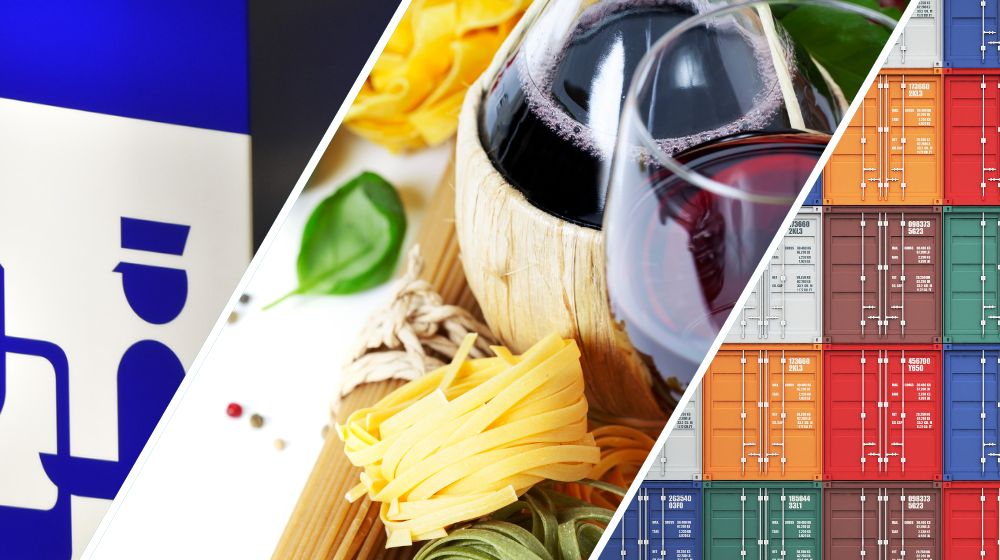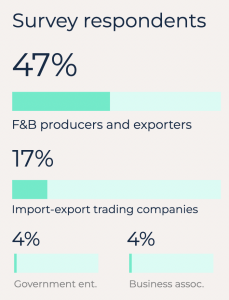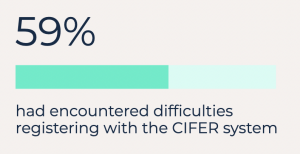


The launch, over a year ago, of the China Import Food Enterprise Registration (CIFER) system, was designed to help overseas food exporters to obtain a registration number with an entirely online process. This system, administered by the General Administration of Customs in China (GACC), is however viewed as complex by many European F&B exporters, especially small and medium-sized enterprises; many issues are encountered, sometimes resulting in significant delay to export F&B products to the Chinese market.
Before the official launch, the EU SME Centre started to organise training sessions on the topic and has remained very active since in answering the many questions coming from European F&B producers. Ad hoc guidelines were launched in June 2022, providing a practical, step-by-step guide as well as a list of FAQs received over several months. Alas, CIFER-related issues continue to represent the majority of the enquiries received via the EU SME Centre’s free and confidential Ask the Expert service.
To continue supporting European F&B producers in this sector, and to better assist them on the specific points of difficulty encountered with the CIFER system and customs processes, between March and April 2023 the EU SME Centre conducted a survey among industry practitioners. The following is a summary of the key takeaways.

A total of 30 responses were received, around half of which (47%) from companies that both produce and export F&B products, followed by trading companies that are only involved in import-export (17%), as well as government entities and business associations (4% each).
It is noteworthy that only one respondent defined itself as a storing company, namely involved only in the storage of F&B products.
The countries most represented by the respondents are Spain, Italy, Belgium and Germany. Feedback was also received from producers in countries such as Estonia, Bulgaria, Poland and Sweden.
Both the so-called ‘high-risk’ categories[1] and ‘low-risk’ categories are represented in the responses, including: dairy (4 respondents, including milk and cheese); meat (4 respondents, all involving pork products); beer (3 respondents); other alcoholic beverages (2 respondents); confectionary (2 respondents). Other products represented include fish and seafood, fruits and vegetables, tea, olive oil, etc.

More than half (59%) of respondents declared that they had encountered issues when registering on the CIFER platform. This includes companies which have completed the registration only in the recent weeks/months, after GACC had already made several rounds of adjustments and improvements to the CIFER interface and online manuals. Interestingly, the remaining did not find the process problematic.
The most frequent issues encountered relate to:
Different respondents highlighted the absence of adequate supporting services by GACC. Currently, questions can be sent to GACC via email (eport@chinaport.gov.cn), however response time can be long and instructions provided may not be clear. A phone number is also available (010-95198 for callers in China, +86-10-95198 from abroad) but only in Chinese language. Furthermore, the CIFER operators are responsible only for answering questions about the submission of applications; they have no competence in explaining approval/rejection decisions made by GACC.
Six different respondents would welcome the creation of an additional, more rapid communication channel, ideally with GACC. One respondent suggested to organise a face-to-face dialogue with GACC to get more information and clarity on the implementation of GACC Decree 248.
Finally, one respondent from the so-called high-risk categories highlighted that the competent authority in their home country has still not been officially recognised by GACC as such for the corresponding product category, therefore the producer cannot complete the CIFER registration as the competent authority is unable to review and approve.
The registration process for the so-called high-risk products differs enormously from that of the low-risk products. While for the latter, the CIFER registration can be completed independently by the F&B producer, for the former, the registration needs to be completed in close coordination with the food safety competent authority in the applicant’s country of origin. The process may take several months, or even more.
In practice, the relevant food safety competent authorities may not always be familiar with the CIFER procedure and requirements. Five respondents reported that the communication with their competent authorities was difficult, not fluent, or even “bad”. This is especially the case of larger Member States which delegates factory and product inspections to territorial representations at the provincial- or municipal-level. One company reported that the veterinary officer appointed by its home country’s competent for factory and product inspection did not know that only the first six digits of HS codes are universal, did not have the checklists and annexes to be verified and filled, and did not know that the documentation had to be submitted to a specific office within the competent authority. The result was that GACC had not begun the review process as did not receive final approval from the competent authority; the producer was left waiting in limbo. More effective training and communication is also needed to be done by Member States’ food safety authorities.
Similar issues are encountered for the modification or extension of already approved applications. In fact, producers of four categories of ‘high-risk’ products (meat; dairy; aquatic products; bird’s nest products) had been required to register their products even before the entry into force of GACC Decree 248; their information was automatically migrated into the CIFER system in early 2022. However, some were requested to supplement missing information before a certain deadline, matching or slightly anticipating the date of expiration of their registration. One respondent reported that they did not receive any updates or instructions from their competent authority on the process; indeed, the EU SME Centre has also received concerns from a few Member States representations in China about the complete lack of information and guidelines on this process. More clarity and instructions from GACC would be warmly welcome, as so far most of the efforts have concentrated on the registration of new products, rather than extension of old applications.
Two respondents reported that they have completed or are about to complete the extension high-risk products, but the process has proved very long and with many uncertainties. This echoes concerns heard in the past about the five-year validity of applications being too short, considering that only completing the registration takes several months (at best). At the same time, two respondents reported that, during the process, they were required to disclose a large amount of confidential business information, such as factory plans, photographs, and details on the production process. This is perceived to be unnecessary and potentially exposing the companies to trade secrets concerns.
Finally, the CIFER registration appears to be particularly redundant for certain categories of high-risk products that are already required to complete similar processes with other Chinese competent authorities. A prominent example is health food, which, before registration with CIFER, also requires a notification or registration process with the Chinese State Administration of Market Regulation – which may take between 8 to 36 months.
In conclusion, although the situation has significantly improved compared to the beginning, especially for low-risk products, nearly one year and a half after the launch of the CIFER system, several issues remain. These involve not only the need for GACC and CIFER system operators to increase the clarity, transparency and efficiency of the registration process – particularly for those so-called high-risk product categories that are already subject to similar procedures (such as health food); efforts are also needed by Member States to better train and instruct local-level personnel responsible for inspecting and recommending high-risk products in their countries.
European F&B producers are also advised to get as familiar as possible with the CIFER registration system – as well as general import/export procedures and requirements of China. In this way, they will not need to rely entirely on their Chinese importers for every step, as issues might emerge and interest might fade away over time. Relevant stakeholders are encouraged to get in touch with the EU SME Centre for free-of-charge and confidential assistance.
[1] Namely: (i) Meat and meat products; (ii) Casings; (iii) Aquatic products; (iv) Dairy products (incl. infant formula) ; (v) Edible bird’s nests and bird’s nest products; (vi) Bee products; (vii) Eggs and egg products; (viii) Edible fats and oils (incl. oilseeds); (ix) Stuffed pasta products; (x) Edible grains; (xi) Milled grain industrial products and malts; (xii) Fresh and dehydrated vegetables, dried beans; (xiii) Seasonings; (xiv) Nuts and seeds; (xv) Dried fruits; (xvi) Unroasted coffee beans and cocoa beans; (xvii) Food for special dietary purposes; (xviii) Health food (functional food/supplements).